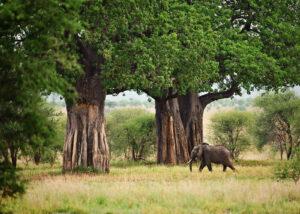Overview
From the wildebeest Migration to the Big five and the Tropical Beaches
Tanzania is Africa’s second largest country with great diversity of wildlife, landscape to the classic savannah destination of Serengeti, Tarangire to Ngorongoro Crater to the beaches and coral reefs of Zanzibar. Tanzania safari delivers one of the massive experiences after another. Safaris in Tanzania happens on daily basis with the biggest number of visitors received in almost every part of the country.
Furthermore, that’s before you discover the off beaten path gems like the chimpanzee trekking, the beautiful forest of Mahale and Rubondo as well as the free game viewing among the beautiful wild and unique landscape of Nyerere famously know as Selous and Ruaha national park.
With the incredible year-round game viewing, to wildebeest Migration and tropical beach finales. Below are some of the best reasons to go on Kenya Safari.
Witness the Great Wildebeest Migration
The wildebeest migration initially starts from the plains of the Serengeti where millions of wildebeests, Zebras and gazelles match annually crossing in to Masai mara. This is the biggest time to go to Tanzania when the migration is at its peak.
The migration is a year-round event, with the timing of the movement influenced by the availability of food and water. However, the most famous and dramatic phase of the migration is the river crossings, which usually occur between June and August.
The migration primarily involves wildebeests, but it also includes hundreds of thousands of zebras and other herbivores. Predators such as lions, cheetahs, and crocodiles also take advantage of this abundance of prey.
The wildebeests follow a circular route that spans approximately 1,800 miles (2,900 kilometers) throughout the year. They move from the southern Serengeti to the northern Serengeti and then cross into the Maasai Mara in Kenya before returning to the south.
One of the most iconic and thrilling parts of the migration is the river crossings. The wildebeests and other animals must cross crocodile-infested rivers, such as the Mara River, in their quest for greener pastures. These crossings can be chaotic and dangerous, as crocodiles lie in wait to ambush the animals.
The migration is a challenging and perilous journey for the animals. They face threats from predators, exhaustion, disease, and the dangers of river crossings. Many wildebeests do not survive the entire migration.
The Serengeti wildebeest migration is a critical ecological event. It helps rejuvenate the grasslands by grazing and depositing nutrient-rich dung. It also sustains numerous predator populations in the region.
The migration is a major tourist attraction, drawing visitors from around the world who come to witness this incredible natural spectacle. Safari tours are organized to provide tourists with the opportunity to observe the migration up close.
The Serengeti wildebeest migration is a remarkable display of the power of nature and the interconnectedness of ecosystems. It’s a must-see event for wildlife enthusiasts and nature lovers.
The Tanzania National park- Host the bulk of the Migration
Mobile camps tend to move as closer to the herds as possible
Some of the accommodation offer easy access to the rover crossing points.
During this time, there is bigger number of visitors received in the country and thus requires you to book early in advance since the well-located safari camps between June and October is limited. Incase you want a front row seat to the dramatic river crossing; you should book your Tanzania safari experience early in advance.
Alternatively, you may opt to go when the herds give birth and graze their way across the plains which is also impressive to see and also the crowds are fewer thus less crowded. Consult our Africa safari experts to plan your trip to coincide with the wildebeest migration movement of the herds.
Over view in Tanzania.
There are three safari circuits in Tanzania, and each one would rank among the best places to see wildlife in the country. When combined with the yearly wildebeest migration, the well-known Northern circuit featuring the Serengeti and Ngorongoro Crater provides one of the greatest traditional safari experiences in Africa.
Wildlife.
The most well-known African creatures in Tanzania, such as the lion, elephant, giraffe, and buffalo, should not be too difficult to see. The Serengeti is the place to go if you want to see big cats, and the Ngorongoro Crater is the best place to go if you want to see black rhinos. Hiking with chimpanzees, seeing African wild canines, and being in awe of the millions of wildebeest, gazelles, and zebras migrating annually are some more wildlife highlights.
Tanzania provides great opportunities to see animals. Tanzania is a fantastic place for wildlife enthusiasts to visit, and just the three safari circuits are worth visiting. Most other popular safari animals, including the Big Five, are plainly observable. Outside of the Ngorongoro Crater, black rhinos are extremely uncommon.
Wildebeest Migration.
One of the most amazing animal displays in Africa is the wildebeest migration. The Mara-Serengeti ecosystem is home to at least two million ungulates, primarily wildebeest but also zebra and gazelle. Another extremely unique time to visit is during the wildebeest calving season. This is a fantastic time to witness some action because of the vast numbers of opportunistic predators drawn to the wildebeest and their calves.
Wildlife Highlights.
The highly endangered African wild dog can be found in rather good numbers in Nyerere and Ruaha, two locations in the Serengeti that are well-known for their quantity of big cats. Africa’s top chimpanzee reserves are Mahale and Gombe Stream.
Best Time for Wildlife Viewing.
The greatest time to see animals is during the dry season, which runs from late June to October. November through May, the wet season, is frequently more picturesque and has fewer visitors. June and July offer the best chances of witnessing the wildebeest migration. During the lengthy rainy season (March to May), which is when some lodges close, the parks on the Southern and Western circuits are less accessible.
Weather & Climate.
The temperature ranges from 20°C/68°F to 30°C/86°F during the dry season, which runs from June to October. It helps to keep in mind that temperatures will decrease with increasing altitude. The “long rains” (also known as the “short rains”) begin in March and continue until May, when the wet season (which runs from November to May) ends with showers.
Tanzania has a nice tropical climate, although there are significant regional differences in the weather that are caused by a number of variables, including altitude. The seaside is the region in the nation that is the warmest and muggiest. While still hot, other low-lying places like the southern and western parks are less humid. The interior is much milder elsewhere, and it cools considerably at night. Tanzania has two different seasons: the dry and the wet.
Arusha’s climate compared to Tanzania’s parks.
The town with a relatively warm climate that is nearest to the most well-known northern parks is Arusha. In most parks, April’s peak precipitation is far less than that of Arusha. The Ngorongoro Crater rim is relatively high (approximately 2,300m/7,545ft), therefore it gets a lot of rain and is extremely cold in the evenings and mornings. Arusha is slightly colder than lower-lying parks like Manyara, Nyerere, Mikumi, Ruaha, Gombe, Mahale Mountains, and Katavi.
Dry Season.
During this time, there is extremely little rainfall and very little humidity. Nighttime temperatures drop, so carry warm clothes because open-air game drives in the mornings can be chilly, particularly in the northern parks.
Wet Season.
The afternoons are normally hot (a little over or below 30°C/86°F) over the majority of the wet season, but they are colder above 1,300 meters (4,265 feet). Because of their high altitude, most northern parks have frigid mornings.
November & December. ‘Short rains, a brief rainy season lasting around a month that falls sometime in November or December. It can occur in October in Northern Tanzania, but its timing is erratic. It is uncommon that the rain will ruin your safari.
January & February, The rainy season usually brings a break to the parks and coastal areas in the north. There is rarely a dry spell in the other parks.
March, April & May – ‘Long rains’ The wettest months are these ones. Though not usually for the entire day, it tends to rain strongly virtually every day. There is usually a lot of humidity, especially in the parks to the south and west that are hotter.
Best Time To Visit.
Visit during the Dry season (June to October) to witness the amazing spectacle of the huge migration. This is also the peak season for wildlife viewing across the nation. All the same, throughout the Wet season (November to May), wildlife drives in the northern circuit parks remain fruitful. Predators prowl the Serengeti during the months of January and February, when wildebeest calving occurs.
The Dry Season (late June to October) is the ideal time to visit Tanzania since it offers the best chances of seeing wildlife. Typically, the migration of wildebeests occurs in the Serengeti in June and July, with the best opportunity to witness their calving being in late January or early February. While the more well-known northern circuit parks are open year-round, the southern and western circuit parks are best explored during the Dry season, which runs from June to October.
Best Time To Go by Major Park.
All year around, there is excellent wildlife viewing in the Ngorongoro Crater and the Serengeti. The greatest months to witness the migration are June and July, while the optimum time to witness the calving of wildebeest is in February. Tanzania’s dry months are excellent for seeing animals. The best time to visit Tarangire and the western and southern circuit parks (Katavi, Nyerere, and Ruaha) is during the dry season, which runs from June to October.
June to October.
So far the best months to see wildebeest migration are in the months of June and July.
The best months to see wildebeest river crossings in the northern Serengeti are
August to September.
In these months, animals are very easy to spot since they like congregating on the waterholes and rivers to take water.
These months have got many advantages for clients since they do not have mosquitoes at all.
All the skies are clear and the days are sunny.
November to May.
The best months for calving in the southern Serengeti are in January and February.
The Park has got green beautiful vegetation.
During these months, you will see plenty of wildlife mostly in the northern circuit parks.
You will also be able to see the migratory birds for those who are bird lovers.
In the months of March, April, and May, rains are mostly likely short afternoon showers and seldom interrupt the clients’ trips.
Request Quote
Fill in and send the safari request form, we shall respond as soon as we receive your message. You can also reach us on Whats-app Number: +256753750983 for urgent requests.

